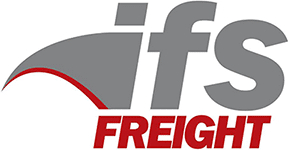How Do You Determine the Capacity of Full Truckload Shipping?

Logistics is far more complicated than sending items from one place to another. There are different transport methods, and each has different load capacities, which determine how a business moves its items. In this blog, we will break down full truckload shipping, important factors and limitations, and the advantages of using this method for shipping goods.
What is Full Truckload Shipping?
Full Truckload Shipping (FTL) refers to transporting goods that fill a truck trailer’s entire usable space or weight limit. Unlike Less Than Truckload (LTL) shipping, where cargo from multiple customers is consolidated, FTL shipments are exclusive to one shipper’s goods. This is the preferred method for large shipments, cargo that requires special handling, or time-sensitive goods. Many businesses also choose FTL because of the time and safety savings.
What are the Main Types of FTL Shipping?
As previously mentioned, logistics is not just about moving items from point A to B. Front Truckload Shipping uses various types of trucks depending on the goods being transported. The most common truck types include:
- Dry Vans: Dry vans are a standard type of fully enclosed semi-trailer. They are best suited to carry pallets, boxes, or loose freight that does not require temperature control.
- Refrigerated Trucks: As their name suggests, they are a special temperature-controlled truck designed to transport temperature-sensitive shipments such as foods, beverages, and pharmaceuticals. Their temperatures can vary depending on the goods. Some may get as cold as negative 20 degrees below zero.
- Flatbeds: A roof or sides do not surround the truck’s bed. These trucks are typically used to transport heavy loads unaffected by weather or road conditions. Flatbed trucks are commonly used for the transportation of construction or industrial materials.
What is the maximum capacity of FTL Shipping?
Each type of truckload will vary in capacity due to its size and weight limits. Dry vans and refrigerated trailers are typically 48′ or 53′ long, with a double-axel that carries a payload between 42,000 and 45,000 pounds. Whereas a 48′ to 53 flatbeds can haul a larger payload, maxing out at 48,000 pounds for a double axle.

Calculating Truckload Capacity
As a business, determining FTL shipping costs can be challenging. Numerous factors to consider, and adjustable pricing make up the overall shipping cost. The most common cost factors include:
Here’s what should be considered when determining your truckload rates:
- Mileage
- Origin/destination (lane)
- Market capacity
- Seasonality
- Lead time
- Spot rate or contracted
- Fuel costs
In addition to these costs are the charges for the weight and volume of the goods being transported. Volume capacity is calculated using a basic formula that measures the basic formula of length x width x height. Weight is determined by the total pounds of goods being transported. There are legal road and truck limits as to the total capacity legally allowed.
Advantages of Full Truckload Shipping
All shipping methods have their benefits, depending on the type and quantity of freight you are shipping. These are the most common advantages of full truckload freight shipping:
Door-to-Door Delivery: Your goods are not sharing a truck like LTL shipping, so your items are delivered straight to their destination. This results in cost and time savings, which are important for all businesses, especially those that have refrigerated goods.
Time Savings: On average, an FTL shipment can save up to two days for a long haul because there are fewer delivery stops and reduced handling time. Saving time, in most cases, saves money.
Reduced Risks: Because your shipment is the only one on the truck, you have the entire truck to itself. That means there is no risk other items will damage yours or vice versa.
As a business, there are many choices when shipping your goods. Full Truckload Shipping comes with numerous advantages and cost-saving opportunities. Before deciding how to ship your items, weigh out the pros and cons of FTL vs. other methods such as Less than Truckload shipping. For more information about FTL and other logistics needs, contact us at IFS Freight.

